5. The Grandmaster (2013)
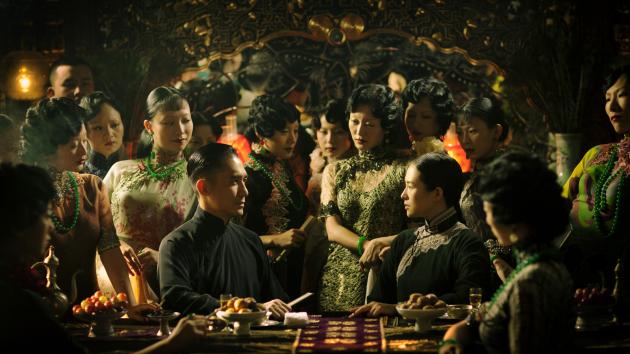
After the lukewarm reception of My Blueberry Nights, Wong Kar Wai retreated to develop new directions in his work. He’s even gone so far as to suggest that he considers himself to be only halfway done with what he wants to show the world. That resurgence of vision can be found here, in Wong’s instant martial arts classic. He returns to the wuxia form of Ashes of Time, but with deeper attention to the forces of love and ambition, where historical passions are drawn first from desire.
The plot of the film largely follows Ip Man, the grandmaster who famous trained Bruce Lee, and who is the subject of a trilogy of eponymous martial arts films. Wong gives us a new vision, however, one motivated more by emotions and feeling than the choreographed kineticism of its counterpart.
This also takes the tension between a devotion to craft or one to life/love as its central conflict. Ip Man travelled a long path with many digressions to end up teaching martial arts in Hong Kong, and that history is littered with revelations of epic scale and moments of deep intimacy, often at the same time.
One of the greatest shots in the film is during a fight sequence in which Ip leaps over his female opponent and finds that his face flies half an inch away from hers. It’s a moment devoid of sound, devoid of time, just frozen for a moment in struggle and intimacy.
4. Happy Together (1997)
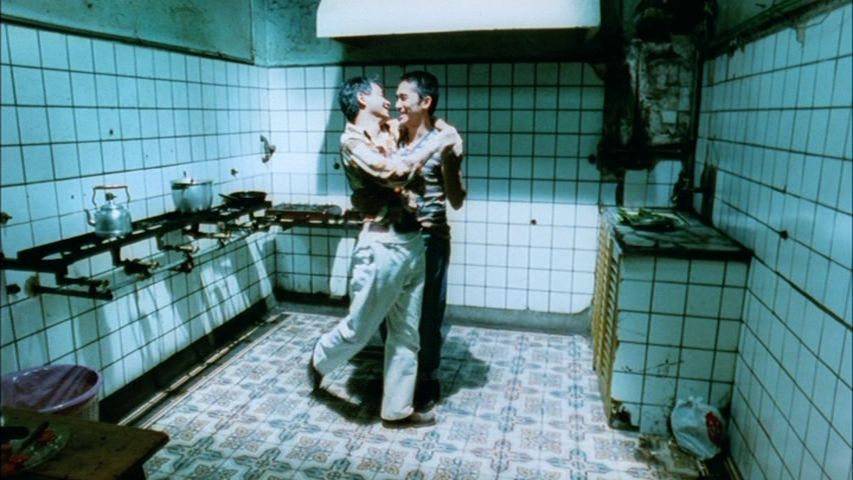
While there is a tragic component to many of Wong Kar Wai’s films, in a pretty basic way they all end out in a positive kind of space, a space of reconnection after loss or at least self-discovery. And some of that can be found here, but Happy Together is perhaps the saddest thing that Wong Kar Wai has ever directed. It follows a couple from Hong Kong who journey to Buenos Aires to mend and renew their relationship.
The main character, Lai, goes through bad cycles of abuse with his boyfriend, so they have come to visit a famous set of waterfalls and find each other again. But they break up before they even reach their destination. Happy Together is a film about how destructive romance can be, how lonely it can make you feel, but also how it always leads you back to yourself, which is where true happiness can be found.
What follows is a great journey homeward, a long circuitous path back to where Lai started, told through unconventional narrative structures and stylistic experiments. After the two break up, they stay in Argentina, working and seeking connections and sex with others. Lai develops feelings for another man eventually, but not before the two of them find their paths crossing over and over.
Each time they find each other, there is a hope and promise of happiness that lingers over them. Vivid images pervade their unhealthy romance, of the two of them waltzing in a kitchen, or silently riding in a cab – these images always feel so comforting and home-like that we come to an understanding of the dark connection between them, and also the necessity of throwing it off.
Through his romance with another man, Lai comes to see this too, recognizing the ideal that he has projected onto his ex-boyfriend, and by the end he has gained no small amount of self-knowledge on his journey. But he does head to his real home.
3. Fallen Angels (1995)
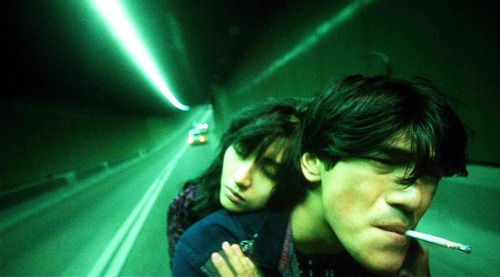
It could be that the apotheosis of the tension between sex and violence in Wong Kar Wai’s work is this film, Fallen Angels. Originally intended to be a third story in Chungking Express, Fallen Angels took on a full bodied life of it’s own.
In his earlier and later forays into this tension (Ashes of Time and The Grandmaster, respectively), that violence was a historical violence, one that reflected the history of Hong Kong cinema and the traditions that gave birth to Wong. But the film that is closest to this is As Tears Go By – Fallen Angels is a contemporary gangster film, but about lust, about a yearning desire for purpose, freedom, connection.
Fallen Angels is largely a diptych that takes place in the same area, but follows two stories about people who otherwise don’t interact. In the first, an enforcer/assassin lives in an apartment that he almost shares with his handler, whom he refers to as his “partner.” She comes by his apartment and fantasizes about being with him, obsessively cleaning (in a manner that continues to echo Chungking, only here the practice is more lustful than romantic).
They never see each other, but sometimes she ends up at a bar, nursing her infatuation by the jukebox. She shares an apartment building with a man who suffers from some mental illness and has recently escaped from prison. But he is also a kind of criminal, breaking into shops and robbing them when he needs money. He’s struck by the fact that he keeps running into the same woman over and over again, that by the end of the film, he takes coincidence to be one of fate’s big tells.
It’s possible the cinematography during this period of Wong’s work is at its highest level. The sublime shots of motorcycle rides through Kowloon, the neon lights and jump cuts, the long energetic tracking shots that accompany every burglary and hit – each of these is a testament to Wong’s ability to play fervently with the pleasures of color and light, of movement and stasis. But this is also a deepening of Wong’s fascination with the power and meaning of chance, of randomness.
Everyone in this film works dutifully to ignore who they are, but those moments of coincidence shake them out of their fog and bring them back into the present, back into the moment, back into the wonder of the body.
2. In the Mood for Love (2000)
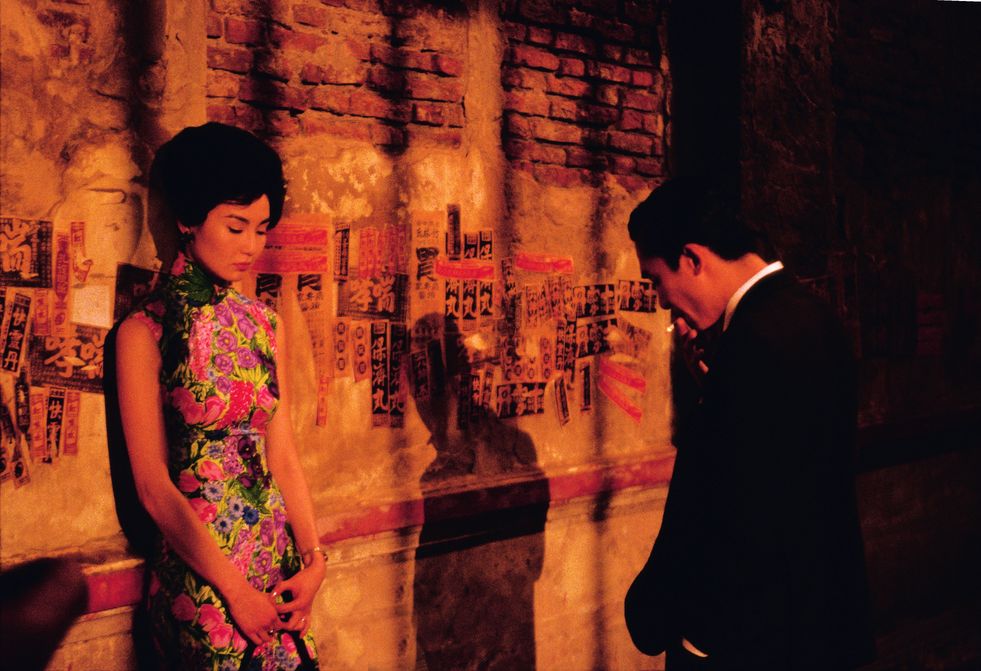
To be honest, it does feel a little criminal at this point to have a film like In the Mood For Love not come in first place on a list. It is a film of such clarity and precision, of such canniness and candor, a jeweled tale that manages to feel singularly poetic and as abstract and timeworn as a folktale, or the ruins of an ancient city.
The story is simple: two couples move into adjacent apartments on the same day. One husband and one wife from each couple begin an affair during some business trips, leaving their partners behind. They long for their partners, but find comfort, intimacy, sensuality, love in each other – but, and this is the important difference, they make a decision not to pursue each other, not to muddy the waters, to resemble in any form the betrayals that bring them together.
Wong Kar Wai is operating at the peak of his abilities here, lurking in hallways, around corners, on the other side of mirrors. We are made to feel like spies, eavesdropping on some illicit behavior, but its never much more than stolen glances and a comic book they decide to collaborate on.Except we do glimpse what we’re looking for, but their love eschews the scandalous. Countless shots of Maggie Cheung in a detailed vintage dress stopping out in the street for some food, or of Tony Leung lingering at a bar smoking cigarettes and drinking tea – these are those breathless moments that Wong’s cinema lives for.
The only thing that keeps it from truly occupying the number one spot on this list, however, is its immaculate construction. Wong Kar Wai makes woozy, disoriented, careening films that barely keep their balance when sprinting through an alleyway or tripping over a melody that stays in your head for days.
Because of how this film subverts the appearances of romance, and in particular how its protagonists live in a state of near denial mixed with a desire to hide their love away, In the Mood for Love is a film that similarly seeks to maintain composure in the midst of chaotic emotions. The final and greatest film on this list is as aesthetically as In the Mood For Love, but is more in line with the particular vision that Wong Kar Wai uses film to present to us.
1. Chungking Express (1994)
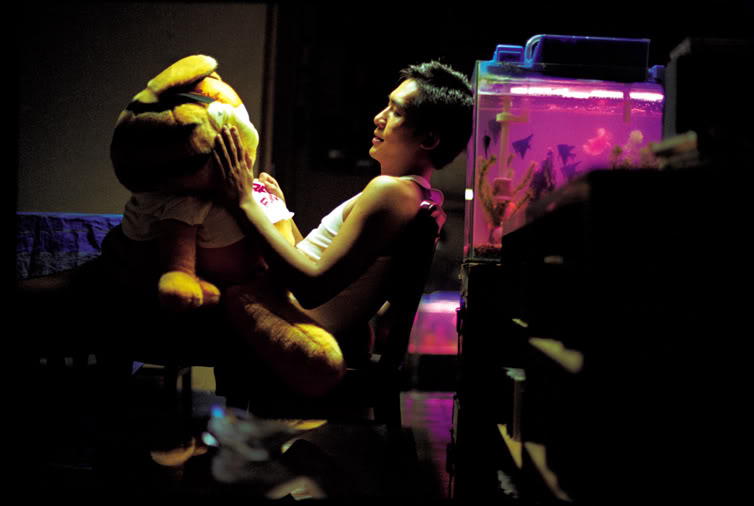
Chungking Express is the greatest of all Wong Kar Wai films. It incorporates themes from his other films to such a degree that repeating them all here will feel redundant, but the fact is that here they are worked through to such an extent that it becomes a clarification of possibility instead of a limitation on it.
A freewheeling exploration of the highs and lows of love, the deep, punctuated valleys of regret and loneliness, and the ways in which those transform into the high peaks of courtship, however obsessive. That obsessiveness of love is on full display here – lovers who spend their time crafting their partners, molding them in some way, conditioning or preparing them for some future expiration date or rendezvous, either of which can slip between your fingers like sand.
The plot is once more split into two halves, following two policemen who find themselves entangled in dramas with different women. The first is pining his ex, who broke up with him on April Fool’s Day, so he doesn’t quite know how to take it. He gives it an expiration date – in one of the most tender, tragic ruminations among these films – of May 1st, and ends up falling in love again within 72 hours of running into a stranger in a crowded street.
The second cop broke up with his ex who dropped off her key at the place where he always gets lunch. But the key finds its way to a new owner, an employee of the lunch counter, who is attracted to the cop, and ensorcelled by the drama of it all, so she steals the key and visits his apartment when he’s at work. There, she cleans his apartment, replaces diminishing supplies (like soap) while he talks to inanimate objects at night, imagining they relocate themselves of their own accord.
Again, we have two people almost sharing an apartment, again we have love that passes within inches of a face, again we have loneliness and heartbreak leading the way to renewed connection with others, again we have Wong Kar Wai. This is him at his most poetic, at his most perceptive of human sexuality and desire and loss. This is him at his very best.
Author Bio: Ben Creech is a writer, educator and film programmer originally from Louisville, KY. He currently resides in Chicago, where he runs an underground cinema when he’s not teaching film studies classes at a local college. He maintains a blog for longer meditations on film art at impossiblepursuits.wordpress.com.